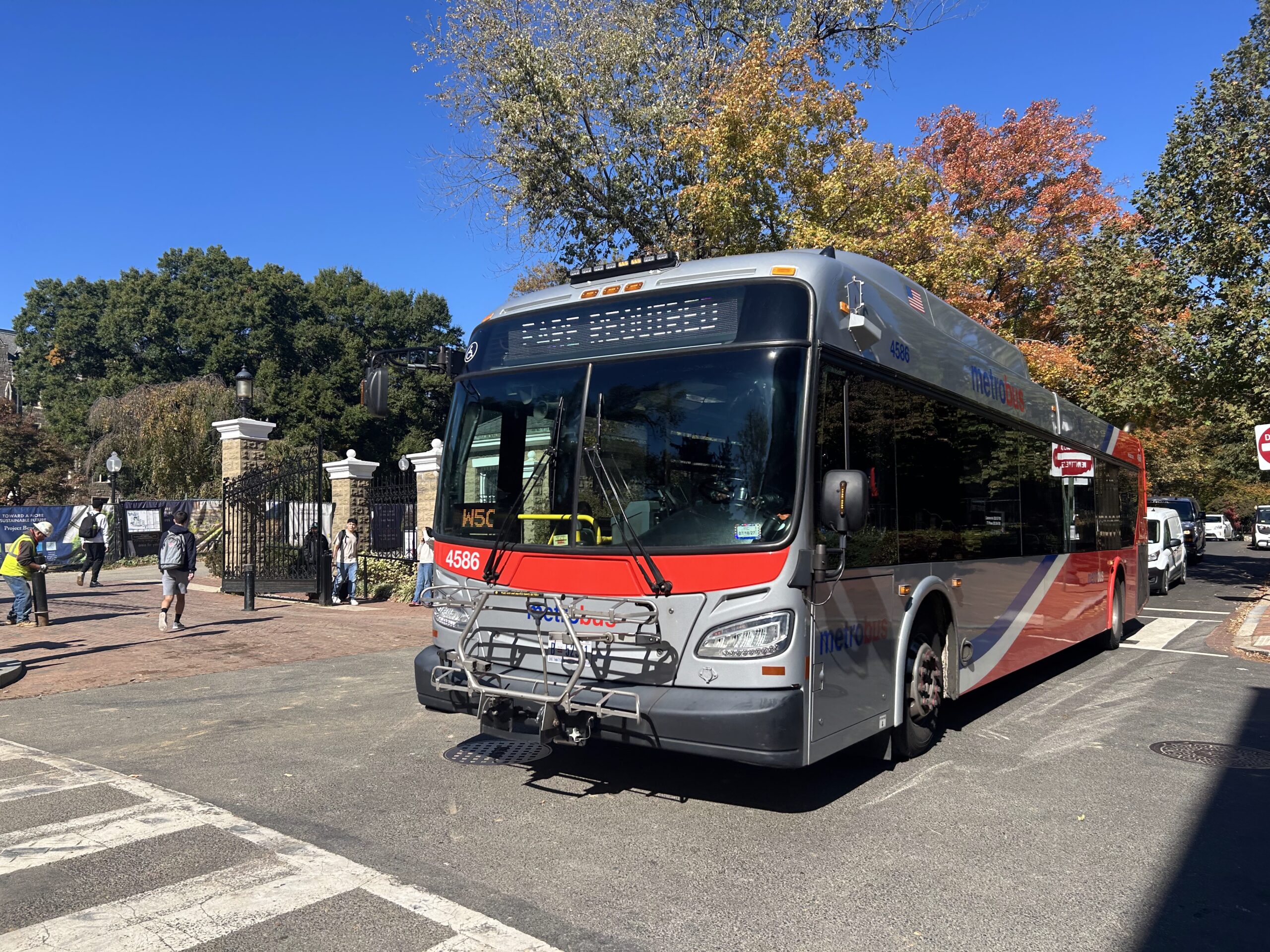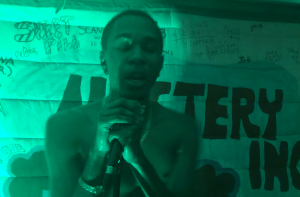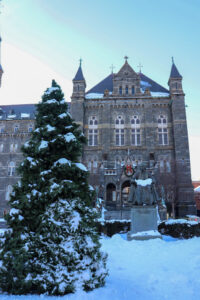From its famed former residents like John F. Kennedy, Madeleine Albright, and Francis Scott Key, to its historical significance as a key trading port and commercial district, it’s impossible to deny the Georgetown neighborhood’s impact on Washington, DC.
But a single glance at the Washington Metropolitan Area Transit Authority (WMATA) Metro map reveals that a Georgetown metro is nowhere to be seen. The metro rails seem to reach most other destinations in the D.C., Maryland, and Virginia (DMV) metropolitan area, including lively downtown landmarks and quiet suburbs in Maryland and Virginia. Furthermore, nine other DMV colleges have devoted Metro stations: a trip on the Red Line takes riders from American University to Catholic University, while the Green Line connects the University of Maryland to Howard University.
However, while Georgetown residents and students alike might be frustrated with the lack of a metro station in the neighborhood, few question why such a station has never materialized. Many hold an assumption that Georgetown residents blocked the implementation of the neighborhood’s metro stop due to a racially-charged “not in my backyard” sentiment.
On campus, this assumption is reflected in the student government’s activities. In particular, a spring 2025 GUSA bill calls on the university administration to take an active role in lobbying for a Metro stop.
“WMATA has historically scrapped plans and pushed off adding Georgetown to the metrorail system due to racist residents’ cries for the ‘status quo,’” the bill reads.
Former GUSA Senator Evan Cornell (CAS ’27) introduced the bill and it passed unanimously.
“Georgetown is not entirely accessible,” Cornell wrote in a statement to the Voice. “I would imagine with the abundance of wealth and sheer opulence that Georgetown’s elite want to flaunt, there is a move toward keeping the neighborhood as closed off as possible to people not of the same tax bracket.”
Cornell and other students’ concerns about neighborhood exclusivity have a solid basis. Despite Washington D.C.’s historic racial diversity, the Georgetown neighborhood is 74.9% white, almost 40% higher than the city’s average. The Black population of Georgetown is 5.8%, which is 42.5% lower than the city’s rate, according to Statistical Atlas. Additionally, Georgetown’s median household income is $171,918, more than double the D.C. ($72,900) and national ($83,730) rates.
However, although there were vocal members of the Georgetown neighborhood opposed to a Metro station, some experts deny the idea that resident influence was the sole reason transit planners did not build a Georgetown subway stop.
“There certainly was neighborhood opposition,” Dr. Zachary Schrag, a professor of U.S. history at George Mason University whose research focuses on American cities, technology, and public policy, said. “The question is, did they have any influence? And I was not able to document any influence.”
In his book, The Great Society Subway: A History of the Washington Metro, Schrag wrote that “although Georgetown residents did oppose a transit station, their attitude was essentially irrelevant, for a Georgetown station was never seriously considered.”
The depth of the Potomac River meant a tunnel connection to Virginia was not feasible, and highway planners blocked a proposal for a shared highway-transit bridge, according to Shrag.
Schrag also adds that the layout of the neighborhood meant that the Metro line could not neatly follow the street grid and would instead need to tunnel below private properties, which could upset building foundations and cause legal headaches.
Zane Nagel (SFS ’26), whose self-proclaimed passions are “Seattle sports, transit, and politics,” agreed with Schrag’s assessment that practical concerns superseded resident influence.
He said that the sprawling nature of the neighborhood meant that various bus services running throughout Georgetown, rather than planting a single Metro stop at the intersection of Wisconsin and M Street, would be the most effective way to reach residents.
Furthermore, Georgetown is not the only neighborhood that experienced technical limitations or resident opposition to creating a metro stop. In some cases, neighborhoods with less political sway than Georgetown experienced resident opposition successfully blocking Metro construction. Shrag recalled the canceled construction of an Oklahoma Avenue station in the early 1970s, near what became RFK Stadium.
“Interestingly, the one station that was clearly canceled, at least in part because of resident opposition, was in a working-class Black neighborhood,” Schrag said. “It’s not always the wealthiest or most influential neighborhoods that decide the fate of a transit station.”
Cornell, however, is skeptical that Georgetown’s neighborhood culture did not contribute to keeping a Metro station out of the neighborhood.
“Knowing how Georgetown’s more elite residents wish to portray themselves and our neighborhood, I have heavy, heavy doubts that resident disdain for outsiders having access to Georgetown would not play at least a small part of this decision,” he said.
However, there is one consensus that advocates and skeptics of a Georgetown metro stop can reach—accessibility to public transport is not easy to accomplish. Whether it be incremental changes, such as adding to the existing bus service, or larger changes, such as constructing a new Metro station in Georgetown, a successful project would depend heavily on WMATA’s capacity.
“All these problems have resource constraints, and Georgetown students, particularly, sometimes forget there is a whole other city of transit out there that needs service,” Nagel said. “We’re not the center of attention.”
Schrag also emphasized that WMATA, as an organization, is not operating at its peak. Despite increases in recent years, metro rail ridership is still 23% lower than pre-pandemic levels as fewer DC-area residents commute daily: Since the completion of the Potomac Yard station in May 2023, WMATA currently has no plans to build new stations for the first time since 2009, and will instead focus on service improvements of existing lines.
“It is not the building agency it once was,” Schrag said. “It is much more an agency devoted to operating what it has and trying to do the best with what it has rather than expand.”
Ultimately, experts and students agree that bringing a new stop to Georgetown would be a difficult task. Even with the lobbying support of the university that Cornell’s bill aims to gain, the question for transit planners may still be one of practicality rather than willingness. However, proponents and skeptics of a Georgetown station agree that more frequent discussion involving the community is necessary to generate ideas and combat misconceptions about the neighborhood.
“If more research is needed and it turns out we could be better served by other options, then so be it,” Cornell wrote. “I just want our community to talk about it and not leave it to the whispers of why or why not. Georgetown is a gem within DC and should be accessible for all.”





